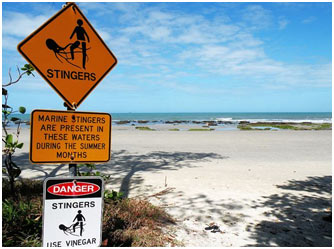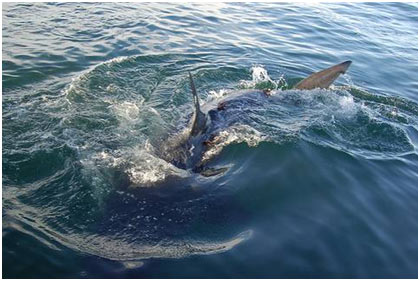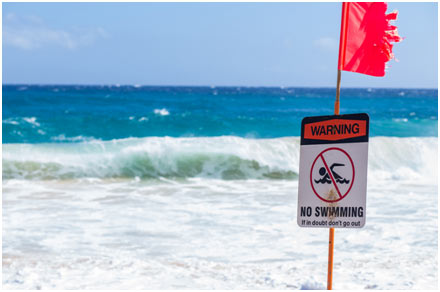Amazing Facts about Beaches
- The longest uninterrupted sea beach is Praia do Cassino.
- The third longest natural sea beach in Cox’s Bazar of Bangladesh.
- The sand of beaches mainly composed of the mineral quartz.
- The beaches have many colors like black, white, red, brown, etc.
- Beaches became the attraction spot for tourists in 18th
- The first beach opened for the public was in 1896.
- Anse Source d’Argent in Seychelles is the most beautiful and most photographed beach.
- Hawaii is popular for its black sand beaches. These are black due to volcanic sand.
- Australia has more than 10,000 beaches which will take 27 years to see them all.
Most Dangerous Beaches on the Planet Earth
Beaches are everything about relaxing, taking in the scenery and usually having a good time. Think crystal clear azure waters, beautiful white sand, and palm trees gently swaying in the year-round sunshine. But some beaches are home to a number of hidden dangers and threats that can mess up any trip– or even potentially kill you.
From Hawaii to Australia, India to Namibia, these locations around the globe are downright scary and often even fatal, home to rampant shark attacks, eel-infested waters, deadly currents, and hazardous waste. Here in this article, are 10 of the world’s most dangerous beaches.
1.Hanakapiai Beach, Hawaii
The beautiful and remote Hanakapiai beach is located on Kauai’s Na Pali Coast. However, if you do make the long hike along the Kalalau Trail through the woods to get here you will be greeted with a warning sign which keeps a tally of the variety of individuals who have actually died here. The number presently stands at over 80 people. Unlike much of the Hawaiian shoreline, there is no offshore reef here to provide shelter from the power of the ocean, but it is the strong riptides here that are the killer.

These hidden currents are formed by the water the waves push towards the beach draining back out to sea. They are speedy and it is almost difficult to swim against them– the only way out is to swim across them. In addition, anyone regrettable to wind up in the rip is not going to discover anywhere to swim ashore for several miles as the rip pulls them westwards.
2.Skeleton Coast, Namibia
This frighteningly named coastline is properly named. Namibia’s Skeleton Coast along the nation’s northern Atlantic coast is hauntingly beautiful however very lethal at the same time. Underwater currents make the location treacherous to both ships and swimmers– in addition to some unfortunate sea life.

Not just does the deadly Benguela Current routinely cause shipwrecks, however, the surrounding waters are home to 11 types of shark. It’s little wonder that Portuguese navigators used to have another name for this coast as well: “The Gates of Hell.”
3.Cape Tribulation, Australia
If you wish to swim the waters of the aptly named Cape Tribulation, they recommend you use a “stinger suit” as the area is home to a great deal of stinging jellyfish. Saltwater crocodiles are also widespread; the locals encourage visitors to stay away from swimming in the mouths of rivers.

If that’s not enough to keep you out of the water, think about these obstacles: Cassowaries– huge flightless birds– whose dagger-like claws “can disembowel you,” and stinging trees which, yes, can in fact sting you rather painfully with their jagged-edged leaves.
4.Praia da Boa Viagem, Recife, Brazil
Boa Viagem is the up-market beachfront district of the northern Brazilian city of Recife. Along the beach are over 100 indications warning swimmers and prohibiting surfers from going into the water.

The reason– Boa Viagem has one of the highest varieties of fatal shark attacks anywhere on earth. Considering that 1992 there have been over 60 attacks reported on this stretch of coast, 24 of which were fatal.
5.New Smyrna Beach, Florida
Florida’s New Smyrna Beach, while gorgeous, also has frightening credibility. With a recorded 238 attacks, the beach, which part of Volusia County, is also known as the “Shark Attack Capital of the World,” according to the Guinness Book of World Records.

Volusia County has a popular surfing area near New Smyrna Beach, simply south of an inlet considered a fertile hunting ground for sharks. Because the surf prevents visibility, sharks react to splashes like those made by surfers paddling to capture a wave and bite blindly.
6.Playa Zipolite, Mexico
When a place’s nickname is the “Beach of Death,” you’ll want to hesitate about going to. Playa Zipolite appears like a spectacular sanctuary, but its waters boast strong and possibly deadly undercurrents. Thanks to the beach’s growing popularity a special lifeguard group has actually been put in place; still, you might wish to pick a different location.

7.Gansbaai Beach, South Africa
Gansbaai itself is a popular tourist location in South Africa and one of the most popular traveler activities is shark cage diving. Nevertheless, going into the waters by yourself can be deadly, as the stretch of coast is also referred to as the Great White Shark Capital.

8.Arnhem Land beaches, Northern Area, Australia
Arnhem Land and Top End in particular is house to a massive population of both saltwater and freshwater crocodiles. If you were to get in the water, and we’d suggest you do not, then there is always the threat of being stung by one of two harmful species of jellyfish.

Box jellyfish (Chironex), with its two-meter-long arms packed with countless venomous stingers, can at least deliver an agonizing sting. At worst it will kill you, specifically offered the remoteness of some of these beaches. The very same holds true of the Irukandji jellyfish which is possibly even more venomous. In addition, the sting can result in Irukandji syndrome a condition lasting approximately several days with one of the signs being a “sense of impending doom”.
9.Chowpatty Beach, Mumbai
Mumbai’s Chowpatty Beach is one of the world’s most contaminated worldwide, making the sea here unsuited for swimming. The sands on this beach are full of debris and scraps from restored ships, and the waters have plenty of discarded waste and disposal from the city of Mumbai.

The beach’s waters have actually just gotten more contaminated since 2011 when the MV Rak sank and spilled 60,000 metric tons of coal. According to the US Epa, swimming in polluted water might lead to illnesses, such as diarrhea or aching throats, or even more severe health problems in kids, the elders, and individuals with weakened body immune systems.
10.Utakleiv Beach – Norway
Norway’s Lofoten Islands stand out, without a doubt. They are likewise some of the very best areas from which to catch the Northern Lights. But while the beaches and shores might look inviting, it’s best to stay on dry, cold land. The islands, which lie north of the Arctic Circle, are surrounded by waters that are between 46 and 57 degrees Fahrenheit. In the summertime. To put that in viewpoint, according to the National Center for Cold Water Security, water below 60 degrees Fahrenheit is “exceptionally dangerous/immediately deadly.”


